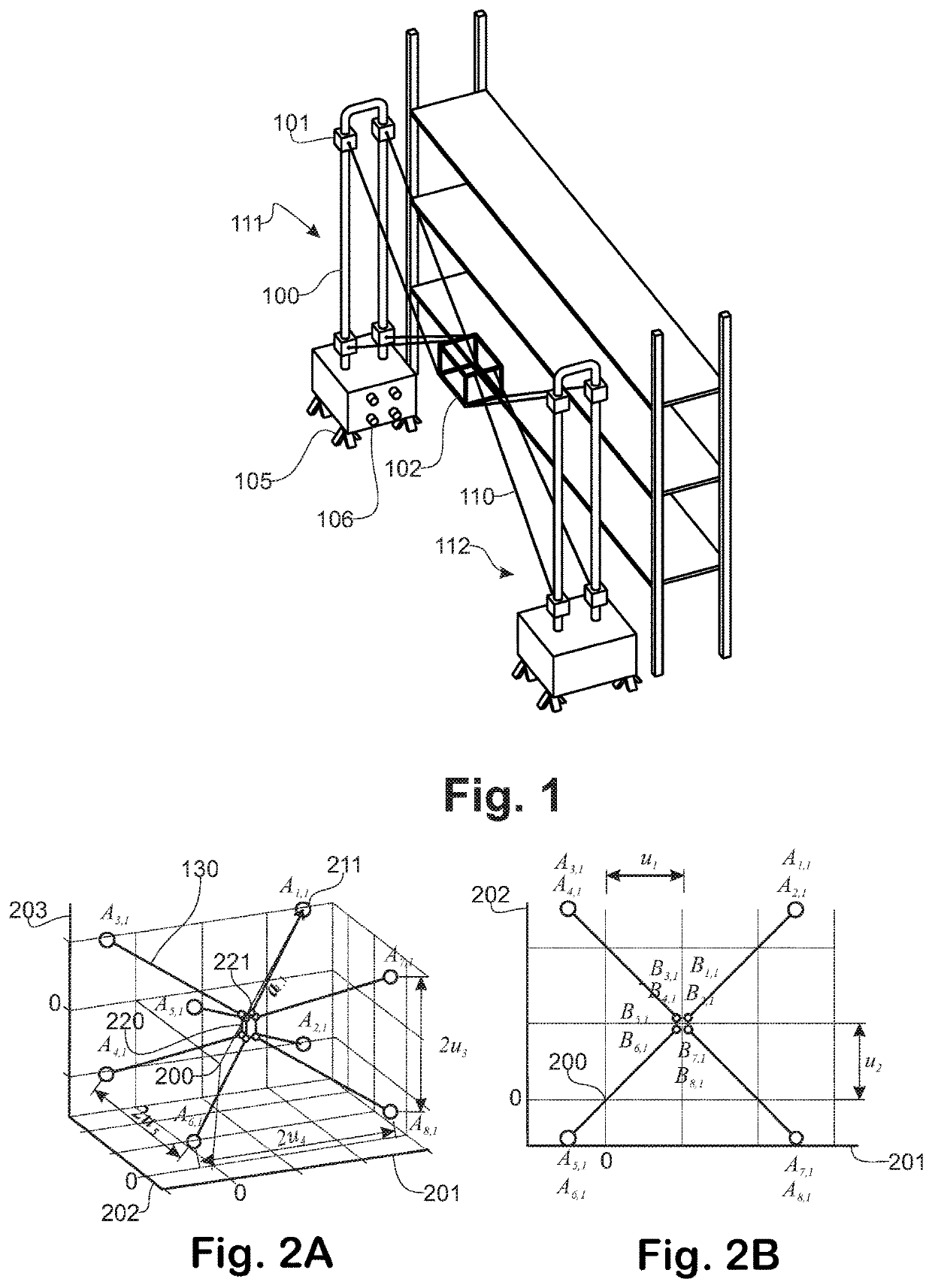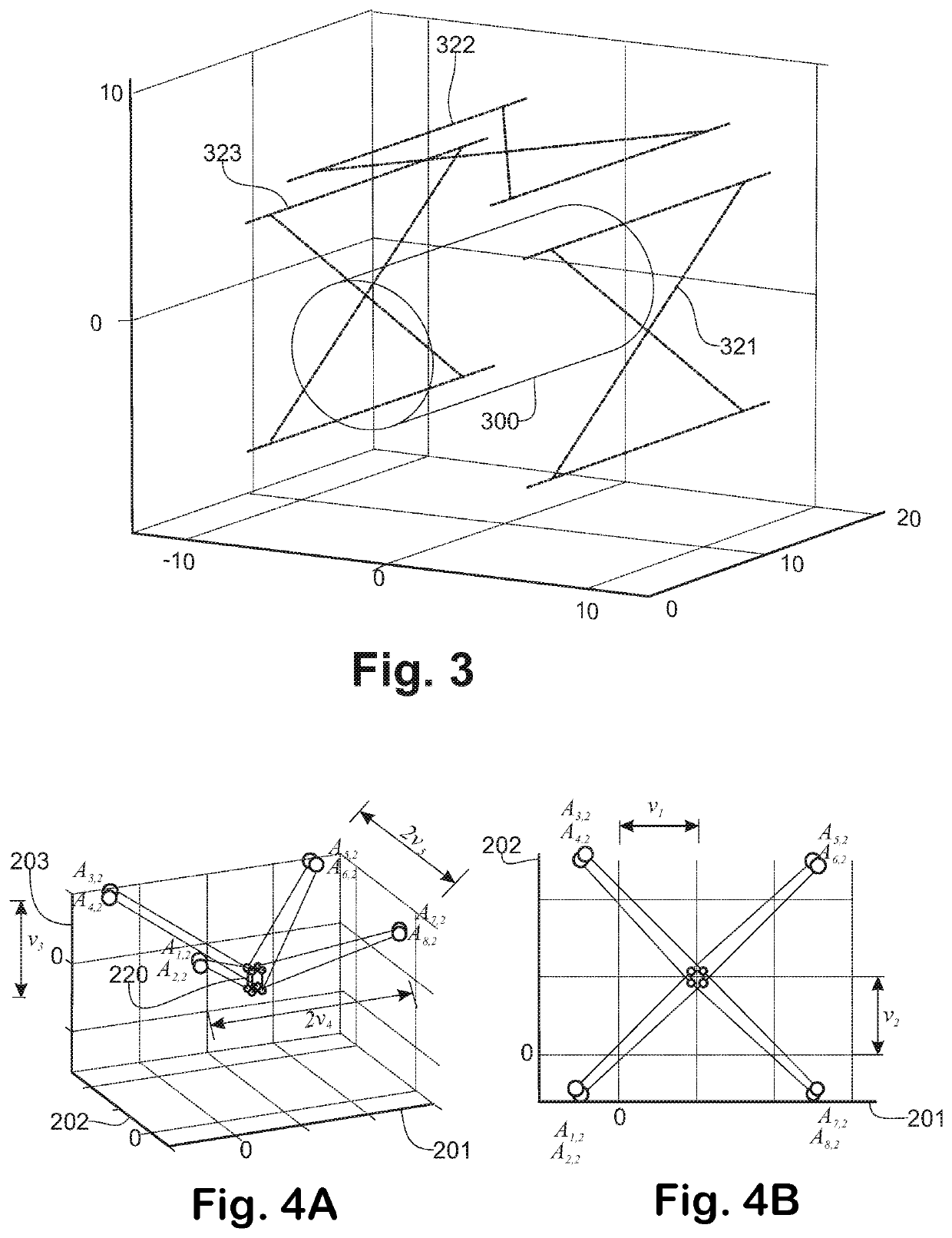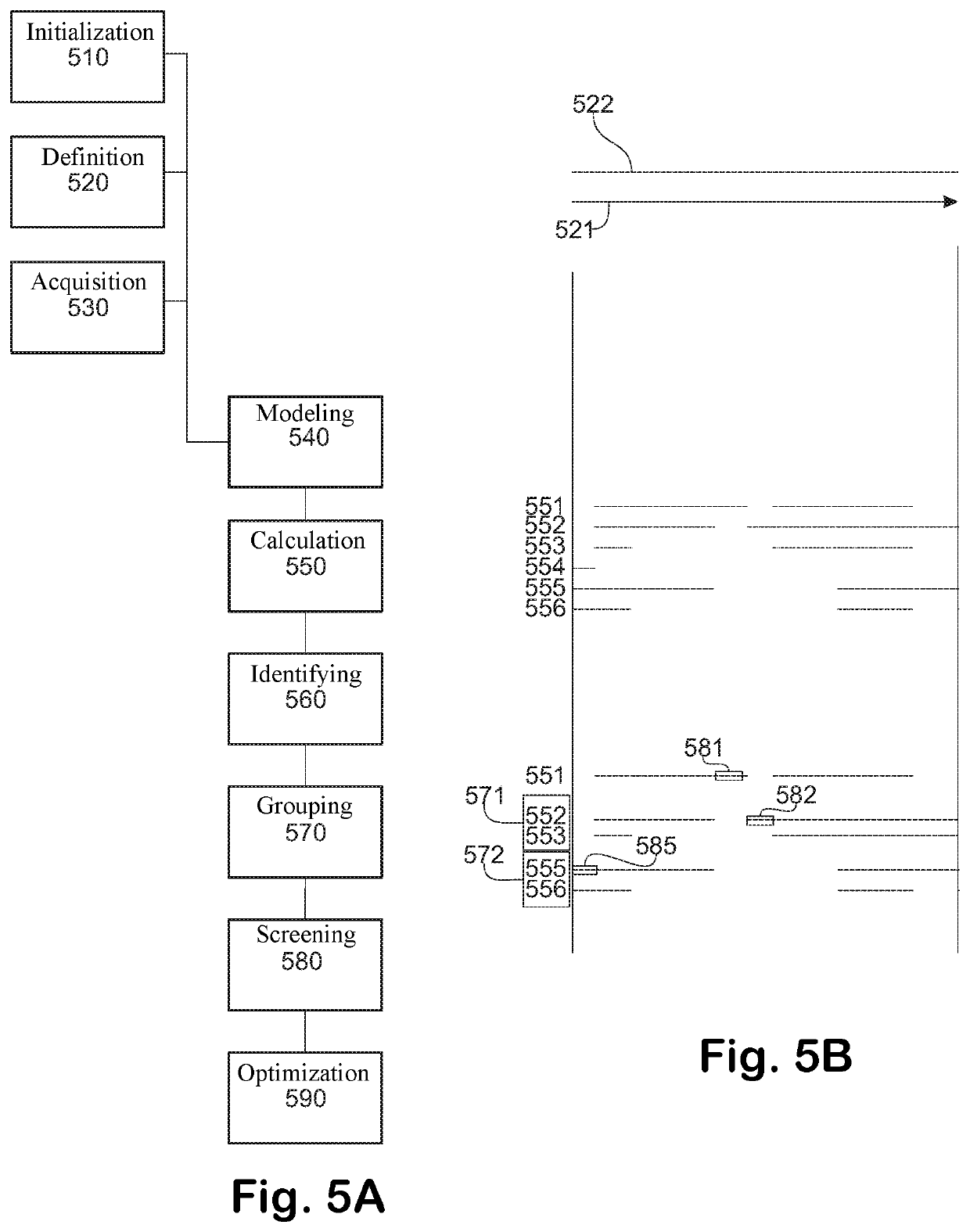Reconfigurable mobile cable robot
a mobile cable robot and reconfigurable technology, applied in the field of reconfigurable cable robots, can solve the problems of collision risk between this item and the cable, large amount of limited workspace, and inaccessible space to certain kinematics, and achieve the effect of widening the search field
- Summary
- Abstract
- Description
- Claims
- Application Information
AI Technical Summary
Benefits of technology
Problems solved by technology
Method used
Image
Examples
Embodiment Construction
[0060]The invention is exposed hereafter according to its preferred embodiments, by no way restrictive, and in reference on the FIGS. 1 to 6E.
[0061]FIG. 1 shows an exemplary embodiment of the cable robot according to the invention. The robot comprises a platform (102) suspended by cables (110). Each cable extends between an attachment point connected to the platform (102) and an anchor (101) linked to a supporting structure. According to an exemplary embodiment said anchor (101) is a pulley and the other end of the cable is connected to a winch (not shown) fixed to the supporting structure. The set of cables connected to a winch at one of their ends, is referred to as the driving set of cables.
[0062]The supporting structure is made in this example by two mobile bases (111, 112) bearing poles (100) supporting the anchors (101). The relative position of each anchor (101) or part of the anchors may be changed by sliding them on the pole or by rotating them with regard to the pole axes....
PUM
 Login to View More
Login to View More Abstract
Description
Claims
Application Information
 Login to View More
Login to View More - R&D
- Intellectual Property
- Life Sciences
- Materials
- Tech Scout
- Unparalleled Data Quality
- Higher Quality Content
- 60% Fewer Hallucinations
Browse by: Latest US Patents, China's latest patents, Technical Efficacy Thesaurus, Application Domain, Technology Topic, Popular Technical Reports.
© 2025 PatSnap. All rights reserved.Legal|Privacy policy|Modern Slavery Act Transparency Statement|Sitemap|About US| Contact US: help@patsnap.com



